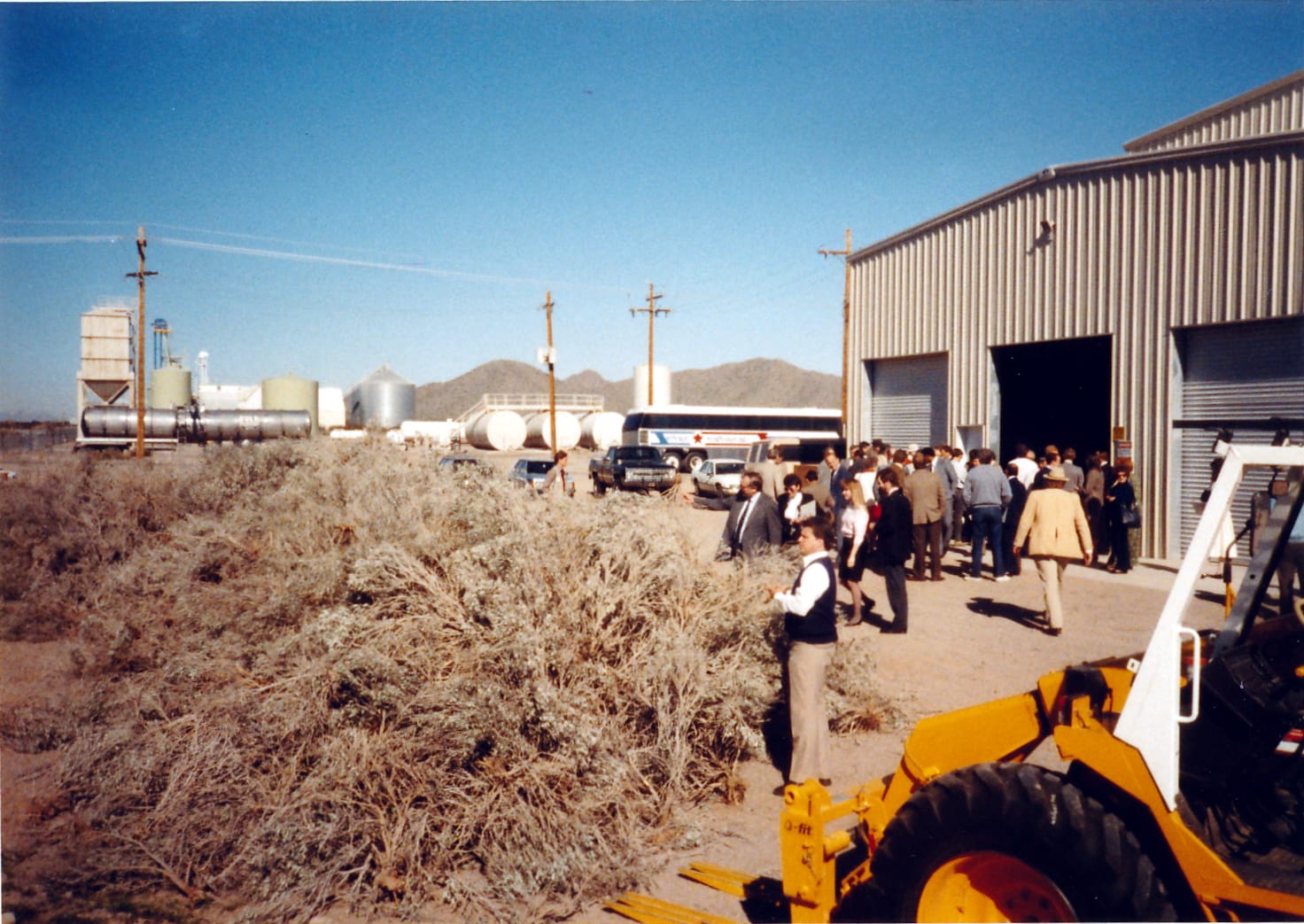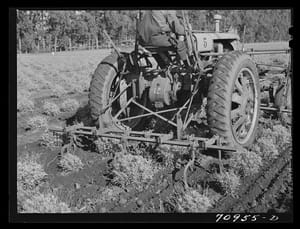One of the ironies of modernity is that the largest industries, providing our most basic needs, are often still the most manual. The garment industry is one example; agriculture is another: one of the most common activities in human history, but also a strikingly manual one.
Most farming today is industrial: It’s rationalized, systematized, and organized around the goal of large-scale production. Walk onto a palm or rubber plantation today, and you’ll see cloned trees planted in a regular plan, laid out for vehicular access, on a graded landscape. The earth being worked has taken on the disciplined character of a factory floor. But the actual harvesting is done by hand, by workers walking among the trees with knives, shovels, and burlap sacks. This is particularly evident in the case of rubber: Latex is harvested by carving precise grooves in a specific spot on the trunk of a Hevea brasilensis tree, attaching a bucket, and then returning to collect the latex-filled bucket hours later.
On the one hand it’s easy to conceive of rubber harvesting as a set of predictable tasks, ready for mechanization. On the other hand it’s far more expedient to use manual labor than to take a shot at automating the process. R&D is time-consuming and risky; if your R&D is successful, deploying the technology will take additional time. And if you’re running a rubber plantation, none of this will improve your numbers this quarter, this year, or even, probably, during your tenure.
It’s an interesting thought experiment to ask if we might be able to obtain natural rubber in some way that doesn’t involve carving grooves in trees with hands and hooked knives. After all, almost 10% of the plant species on Earth produce latex, and we picked Hevea on one metric alone: yield per unit of land area. Modern clones of Hevea produce 3000 kilograms of rubber per hectare per year. Meanwhile, one of the highest-yielding alternatives to Hevea is a desert shrub called Guayule (pronouced hua-YOO-lee), which produces approximately 300-1000 kg of rubber per hectare per year.
One key difference between Guayule and Hevea is in the way the two species are harvested and processed. Guayule latex is harvested by either uprooting or clear cutting entire plantings. The cut stems are baled, then sent through a series of mechanical and chemical digesters in a processing plant. Crucially, this means that much more of the work of growing and harvesting Guayule can be done with common farm machinery – the same machines that are used to work the world’s many millions of acres of corn, soybeans, and wheat. And while Guayule stems require more post-processing than Hevea, the post-processing can be fully mechanized.

Guayule, in other words, is almost tailor-made for the other way industrial agriculture is practiced – a thoroughly mechanized activity designed around having small numbers of people produce giant crops. So much about the cultivation of Guayule feels almost viscerally like an assertion of dominance over nature: Our monumental tractors dwarf the spindly shrubs, we terraform the desert in neat rows, and flood it so the first shoots emerge.
There’s at least a plausible argument that we should be relying more on Guayule for the world’s rubber. It’s drought tolerant and serves as ground cover to stop desert winds from carrying topsoil away. Unlike Hevea, it requires little fertilizer, so its environmental footprint might be lower per kilogram of rubber. And while plantations of cloned Hevea trees have proven vulnerable to mass outbreaks of disease, Guayule seems to be innately disease resistant. One farmer called it “the most boring thing he’s ever grown.” And because rubber tapping is so labor intensive, there are serious concerns that much of the world’s rubber production relies on the toil of coerced labor.
But Guayule requires irrigation, at least during the first weeks of its life, and it’s impossible to say what the impact of turning that much desert into farmland will be. The history of industrial agriculture is a litany of unintended consequences and negative externalities.
So there’s a sort of science-fiction, alternate-history quality to the story of Guayule. If some visionary were trying to kickstart the rubber industry today, Hevea doesn’t necessarily look like a better choice than Guayule. If not for the bloody intertwining of colonialism and the plantation system, it might seem almost quaint that we rely on manual harvesting for so much of the world’s natural rubber when we could mechanize rubber farming by choosing to obtain latex from a different plant. But perhaps our freedom to consider values other than yield is a privilege of modernity.
SCOPE CREEP.
Read the full story
The rest of this post is for paid members only. Sign up now to read the full post — and all of Scope of Work’s other paid posts.
Sign up now


